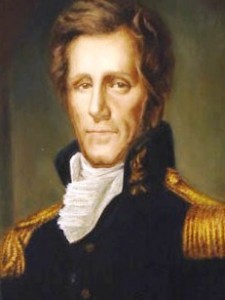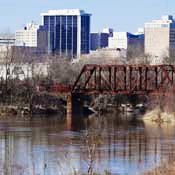» posted on Wednesday, December 5th, 2012 by Linda Lou Burton
Pearls of Wisdom
 Linda Burton posting from Jackson, Mississippi – “You hear people say that folks in Mississippi are slow,” Reese said. “We’re not slow, we’re content!” He laughed a little at his own remark and added, “You don’t have to rush around hurry, hurry when you’ve got everything you want. Here family comes first; it’s all about enjoying what you have. We’ve got good food, good music, and a good life.” Reese went on to explain that he’s a transplant from Ohio and moving to Mississippi was a culture shock at first, but now he says he’s adjusted to the pace. “What is better than all the family getting together for Sunday dinner and then sitting out on the porch in rocking chairs and talking? You can’t beat that.” Such was my introduction to the capital city of
Linda Burton posting from Jackson, Mississippi – “You hear people say that folks in Mississippi are slow,” Reese said. “We’re not slow, we’re content!” He laughed a little at his own remark and added, “You don’t have to rush around hurry, hurry when you’ve got everything you want. Here family comes first; it’s all about enjoying what you have. We’ve got good food, good music, and a good life.” Reese went on to explain that he’s a transplant from Ohio and moving to Mississippi was a culture shock at first, but now he says he’s adjusted to the pace. “What is better than all the family getting together for Sunday dinner and then sitting out on the porch in rocking chairs and talking? You can’t beat that.” Such was my introduction to the capital city of  Jackson, as I chatted with Reese at the front desk of my hotel, inquiring as I always do – what do you like best here? The Visitors Bureau promotes Jackson the same way, calling it “The City With Soul” and emphasizing its family friendliness. I started reading more about this place that started out as LeFleur’s Bluff, a trading post on a “high handsome bluff” on the west bank of the Pearl River. And thinking about Reese’s words of wisdom.
Jackson, as I chatted with Reese at the front desk of my hotel, inquiring as I always do – what do you like best here? The Visitors Bureau promotes Jackson the same way, calling it “The City With Soul” and emphasizing its family friendliness. I started reading more about this place that started out as LeFleur’s Bluff, a trading post on a “high handsome bluff” on the west bank of the Pearl River. And thinking about Reese’s words of wisdom.
 The Pearl River is the first part of the Jackson story. The river begins about mid-state and flows 444 miles south into the Gulf of Mexico; the last 115 miles form the border between Mississippi and Louisiana. The Pearl River, the Mississippi River, and the Natchez Trace were major trade routes in Mississippi Territory in the early 1800’s. When Mississippi became a part of the Union on December 10, 1817 as the 20th state, Natchez was the capital. Natchez is in the southwest corner of the state, and after a while the Mississippi state legislature decided the capital should be more centrally located. They selected three men — Thomas Hinds, James Patton, and William Lattimore – and sent them to search for the right spot. The men looked at areas north and east, then proceeded southwest along the Pearl River until they came to LeFleur’s Bluff. They took a glowing report back to the General Assembly, saying that this location had “beautiful and healthful surroundings, good water, abundant timber, navigable waters, and nearness to the Natchez Trace.”
The Pearl River is the first part of the Jackson story. The river begins about mid-state and flows 444 miles south into the Gulf of Mexico; the last 115 miles form the border between Mississippi and Louisiana. The Pearl River, the Mississippi River, and the Natchez Trace were major trade routes in Mississippi Territory in the early 1800’s. When Mississippi became a part of the Union on December 10, 1817 as the 20th state, Natchez was the capital. Natchez is in the southwest corner of the state, and after a while the Mississippi state legislature decided the capital should be more centrally located. They selected three men — Thomas Hinds, James Patton, and William Lattimore – and sent them to search for the right spot. The men looked at areas north and east, then proceeded southwest along the Pearl River until they came to LeFleur’s Bluff. They took a glowing report back to the General Assembly, saying that this location had “beautiful and healthful surroundings, good water, abundant timber, navigable waters, and nearness to the Natchez Trace.”
 On November 28, 1821 a legislative act authorized “LeFleur’s Bluff” to be the permanent seat of government for the state, and declared that it would be re-named “Jackson” in honor of Major General Andrew Jackson (who later would be the seventh President of the United States). Though briefly called “Chimneyville” after the Civil War – Sherman’s Union forces completely burned the city during the
On November 28, 1821 a legislative act authorized “LeFleur’s Bluff” to be the permanent seat of government for the state, and declared that it would be re-named “Jackson” in honor of Major General Andrew Jackson (who later would be the seventh President of the United States). Though briefly called “Chimneyville” after the Civil War – Sherman’s Union forces completely burned the city during the  siege of Jackson in 1863, leaving only the chimneys of houses standing – it remains Jackson today, a capital city “high on a handsome bluff” with beautiful and healthful surroundings, as those three Pearl River travelers described it, so long ago.
siege of Jackson in 1863, leaving only the chimneys of houses standing – it remains Jackson today, a capital city “high on a handsome bluff” with beautiful and healthful surroundings, as those three Pearl River travelers described it, so long ago.
Today’s Jackson is a church-going town; every major denomination is represented and there are more than 400 houses of worship. Today’s Jackson is a food-loving town; over 300 restaurants offer everything from downhome southern cooking to international fare. There is one university and six colleges in Jackson; the community supports a symphony orchestra, an opera, ballet companies, professional theater groups, a new art  museum. There are blues, gospel, and jazz for music lovers; Civil War and Civil Rights sites for history lovers; Pulitzer winning author Eudora Welty’s home for literary buffs.
museum. There are blues, gospel, and jazz for music lovers; Civil War and Civil Rights sites for history lovers; Pulitzer winning author Eudora Welty’s home for literary buffs.
And, as Reese so wisely noted, there is the contentment of Sunday dinners, front porches, and rocking chairs, right here by the Pearl.
Jackson Convention and Visitors Bureau http://www.travel-visitjackson.com
U S Federal Census http://quickfacts.census.gov/qfd/states/28/2836000.html
U S Federal Census 2010 shows Jackson, Mississippi population as 173,516.
Black 79.4%. White 18.4%. Latino 1.6%. Asian 0.4%. Native American 0.1%.
